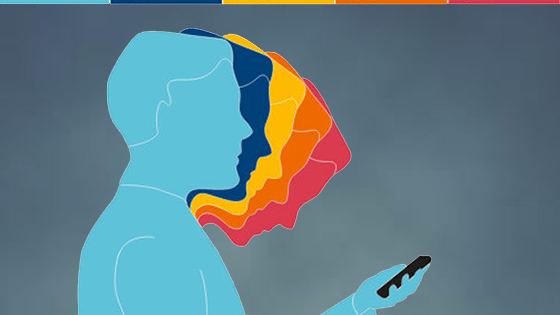We live in an increasingly connected world. Smartphones allow us to stay constantly in touch with friends and family, up-to-date on the latest news, constantly checking in on social media, and for some of us, connected to work 24/7. According to the Pew Research Center, 64% of Americans now own a smartphone, which is up from 35% from 2011.
This constant connectivity has a cost. “Text neck,” a repetitive strain injury is becoming more common. Hunching over the smart phone screen can lead to muscle pain in the neck and shoulders, and sometimes the lower back.
Research has shown that the weight placed on the neck from tilting it forward at a 60 degree angle is equivalent to carrying an 8 year old around your neck for hours each day.
Over time, this can lead to tears in the discs, herniated discs, or spinal stenosis (narrowing around the spinal cord or spinal nerves). These spinal changes, which are typically associated with aging, may becoming more common in younger people, including teens and even younger.
Text neck occurs because of the posture we tend to use when we stare at our smartphones – looking down, dropping the head forward toward the chest, and rolling the shoulders forward – increases stress on the neck and can actually change the natural curvature of the spine over time.
Smartphone users spend an average of 2-4 hours a day in this position, and the result is a serious increase in excess stress on the joints, discs, and muscles of the neck and upper back. In combination with a sedentary lifestyle, text neck can lead to chronic pain and negative consequences on the body. Sitting in a slumped position can actually restrict the lungs’ ability to expand, which reduces lung capacity by 30%. Chronic headaches are also a consequence of this posture.
In addition to text neck, another result of our smartphone culture is thumb or finger pain. Think about how much typing and swiping are done on smartphone screens and this is leading to repetitive strain injury of the fingers.. Twisting the thumb in this unnatural angle in order to type can also cause inflammation, which leads to aching and cramping pain.
Tips to combat these pains:
- Take regular breaks when texting. You should look up from the screen at least every five minutes.
- Keep ears aligned with the shoulders and the shoulder blades rolled back
- Bring your smartphone up to eye level to ease the stress to the neck, use the voice-to-text feature, and try to make more calls rather than long texts.
- My guest, Ty Warner created an inexpensive, simple toy to prevent text neck called the “Peek-A-Boo” https://store.ty.com/newtys/tyshop_items.cfm?categ=PEEK
- Exercises and simple neck stretches can also help ease the pain associated with text neck.
For more information, check out my podcasts on text neck: Parts I and II feature an interview with Dr. Ken Hansraj and Ty Warner, creator of the Beanie Baby. Ty developed a simple toy called the “Peek-A-Boo(https://store.ty.com/newtys/tyshop_items.cfm?categ=PEEK) to prevent text neck and Dr. Hansraj discusses risks, symptoms, treatment, and other preventive strategies.
Listen to Text Neck Pain, Part I podcast here: https://paulchristomd.com/text-neck-pain
Listen to Text Neck Pain, Part II podcast here: https://paulchristomd.com/text-neck-pain-part-ii

